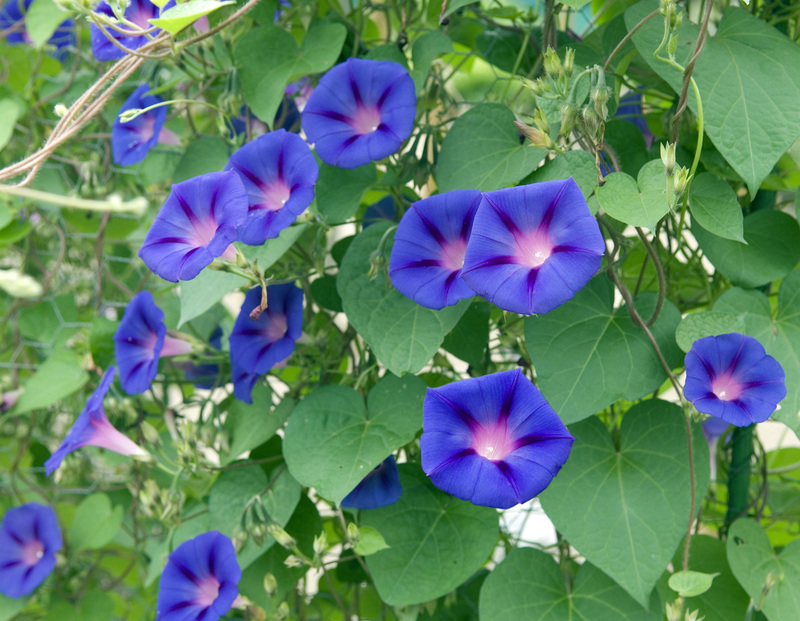Create a lush UK garden with these 9 outstanding ground covers
Posted on 15/05/2025
Create a Lush UK Garden with These 9 Outstanding Ground Covers
A well-designed garden can be a source of endless pleasure. One effective approach to achieving a lush, thriving outdoor space is through the strategic use of ground covers. These versatile plants provide numerous benefits, including weed suppression, erosion control, and aesthetic enhancement. In this guide, we will explore nine outstanding ground covers ideal for UK gardens, offering suggestions for both sun and shade conditions.
The Benefits of Ground Covers
Ground covers play a vital role in any garden, offering a range of horticultural benefits. Here's why they are integral:
- Weed Suppression: A dense canopy of ground cover plants reduces light access to the soil, inhibiting weed growth.
- Erosion Control: They protect the soil against erosion, particularly on slopes or in areas with heavy rainfall.
- Moisture Retention: Ground covers can help retain soil moisture, reducing the frequency of watering.
- Temperature Regulation: They offer a cooling effect during warmer months and provide insulation in winter.
- Aesthetic Appeal: With a wide variety of textures and colors, ground covers can enhance the visual appeal of your garden.

1. Ajuga reptans (Bugleweed)
Perfect for shaded areas, Ajuga reptans, also known as Bugleweed, is a hardy ground cover that thrives in the UK's variable climate. It features striking purple-blue flowers and glossy leaves that come in shades of green and purple.
- Light: Prefers partial to full shade.
- Soil: Moist and well-drained.
- Benefits: Excellent for controlling erosion.
2. Vinca minor (Lesser Periwinkle)
Vinca minor is an evergreen perennial known for its lovely purple-blue flowers. Its drought resistance and rapid spread make it ideal for low-maintenance gardens.
- Light: Tolerant of both sun and shade.
- Soil: Adapts to various soil types.
- Benefits: Provides year-round coverage and suppresses weeds effectively.
3. Galium odoratum (Sweet Woodruff)
This delightful, fragrant ground cover is celebrated for its white, star-shaped flowers and delicate leaves. Galium odoratum thrives in shaded areas.
- Light: Prefers deep to partial shade.
- Soil: Prefers moist, well-drained soils rich in organic matter.
- Benefits: Offers a lovely scent and controls weeds effectively.
4. Cerastium tomentosum (Snow-in-Summer)
Cerastium tomentosum, known as Snow-in-Summer, is beloved for its striking white flowers and silver-grey foliage. It performs well in rock gardens and sunny borders.
- Light: Full sun.
- Soil: Well-drained, gritty soil.
- Benefits: Suitable for areas with poor soil and offers drought resistance.
5. Fragaria vesca (Wild Strawberry)
A dual-purpose ground cover, Fragaria vesca offers both visual interest and edible fruits. This plant spreads quickly, forming a dense mat of foliage.
- Light: Sun to partial shade.
- Soil: Well-drained and humus-rich.
- Benefits: Provides fruits alongside ornamental value.
6. Thymus serpyllum (Creeping Thyme)
Aromatic and resilient, Thymus serpyllum is perfect for sunny spots and provides a delightful fragrance. It is an excellent choice for pathways or garden edges.
- Light: Full sun.
- Soil: Well-drained, sandy soil.
- Benefits: Attracts pollinators and is drought-resistant.
7. Waldsteinia ternata (Barren Strawberry)
Known for its bold yellow flowers and glossy green leaves, Waldsteinia ternata is a robust ground cover that adapts well to various conditions.
- Light: Sun to partial shade.
- Soil: Moist and fertile.
- Benefits: Offers seasonal color and weed suppression.

8. Lamium maculatum (Dead Nettle)
Lamium maculatum, or Dead Nettle, is treasured for its variegated leaves and vibrant pink or purple blooms. Ideal for shady gardens, it provides continuous coverage.
- Light: Partial to full shade.
- Soil: Humus-rich, well-drained soil.
- Benefits: Low maintenance and excellent for difficult shaded areas.
9. Lysimachia nummularia (Creeping Jenny)
Lysimachia nummularia, commonly called Creeping Jenny, is renowned for its bright yellow flowers and trailing stems. It thrives around water features and in damp areas.
- Light: Sun to partial shade.
- Soil: Prefers wet and boggy soils.
- Benefits: Provides vibrant color and is ideal for moist environments.
Conclusion
By incorporating these versatile ground covers, you can transform your garden into a lush, vibrant haven regardless of the challenges your space might present. Each of these plants offers its own unique beauty and functionality, ensuring a landscape that is both aesthetically pleasing and environmentally beneficial. As you plan your UK garden, consider your local climate, soil conditions, and the specific needs of each plant to ensure successful cultivation. With these tips and selections, achieving a dreamy garden landscape is within reach!



